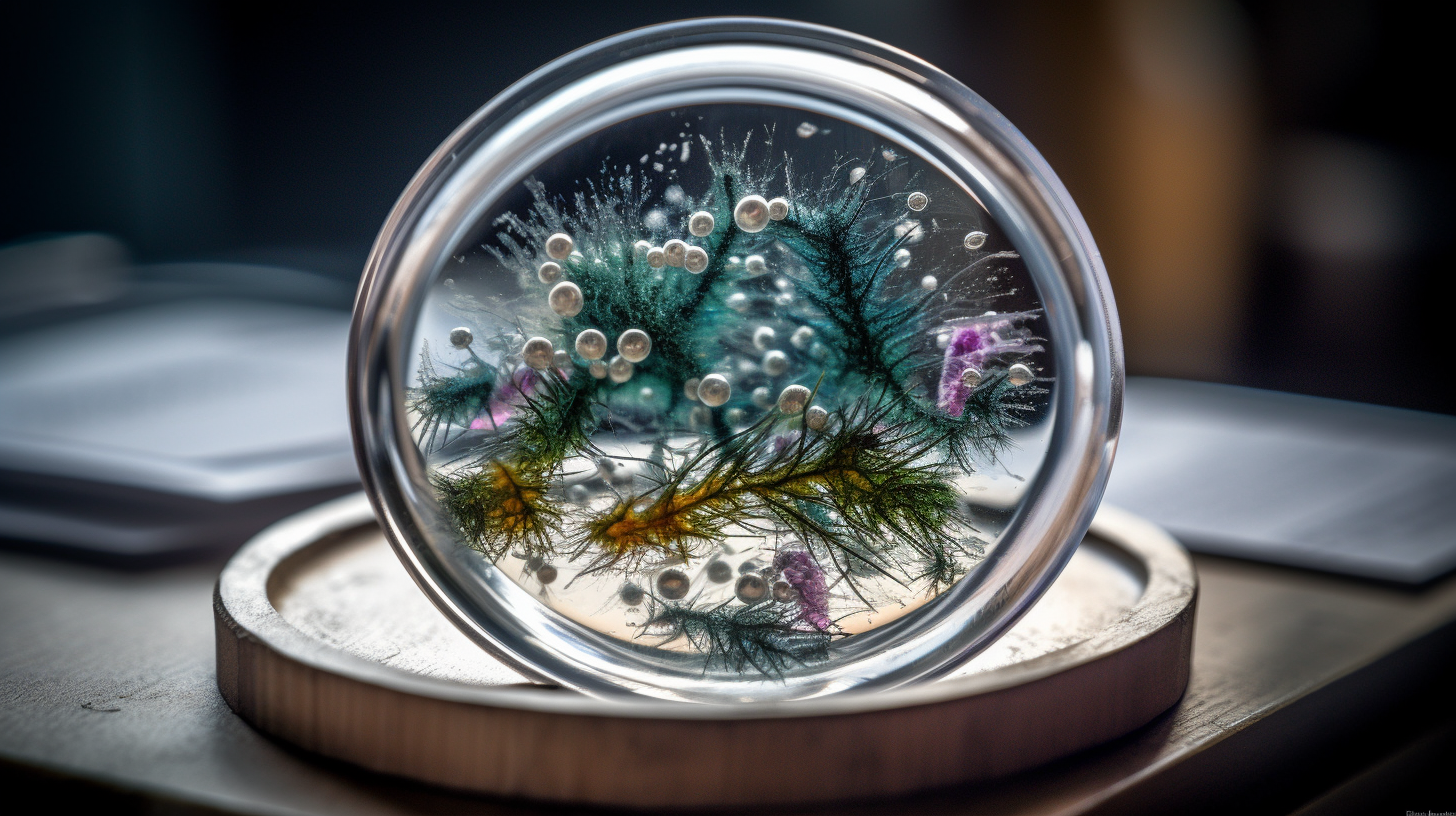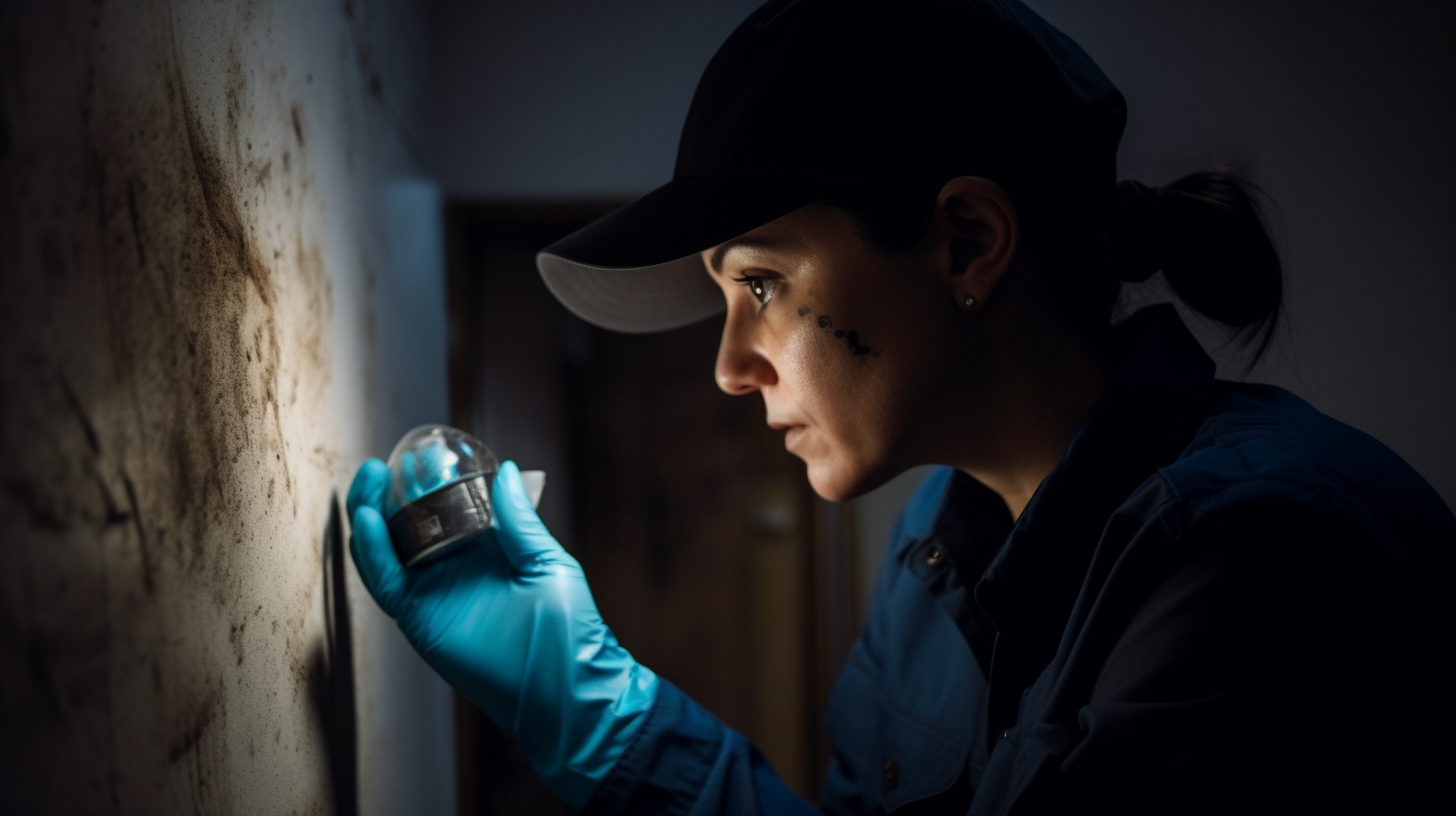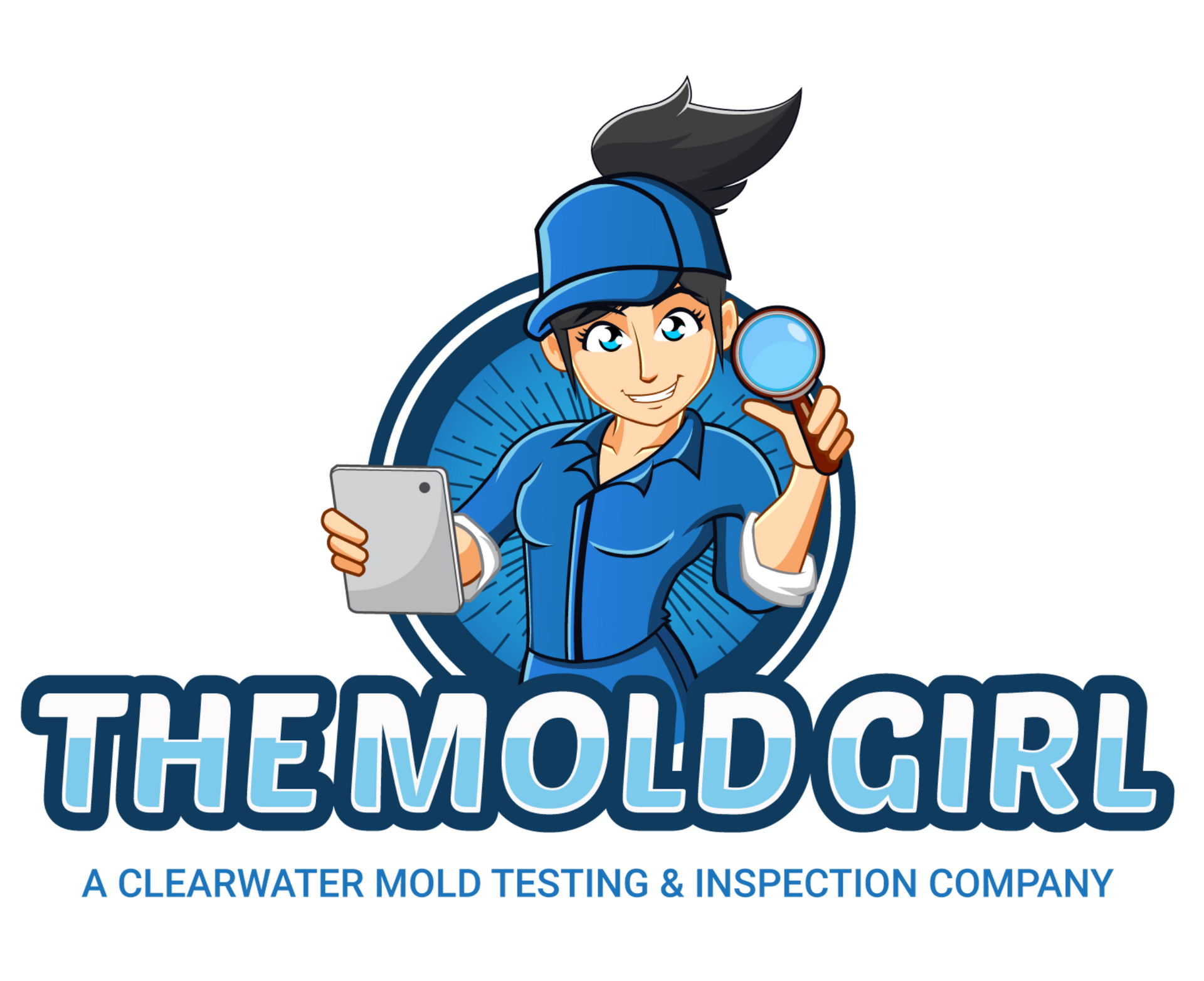Now Is the time to...

Claim Your FREE 15 Minute Phone Consultation Today!
Liz Keefer: 727-626-5331
Speak To A Mold Specialist Today!
Yes, We Offer Mold Detection
Yes, We Offer Black Mold Test
Yes, We Offer Mold Air Test
Yes, We Offer Indoor Mold Testing
Mold. It's one of those words that can strike fear in the heart of a homeowner. It's often the stuff of nightmares - the things you hear about in horror stories about old homes that haven't been properly maintained. If a home has it, it can represent a major health risk and a significant expense to put it right. Luckily, there's mold testing, a process that can help ensure the safety of your home and help you save money in the long run. So if you've never heard of mold testing or don't know what it involves - read on! We'll be covering everything you need to know about mold testing here, from why it's important, to how to find out whether you need it - and of course, how to go about it. Let's dive in.
Quick Explanation
Mold testing involves identifying and testing for the presence of indoor molds in homes or businesses. Different methods of testing can be used to identify different types of mold and its severity.
Identifying Mold in Your Home
When it comes to identifying mold in your home, there are many factors to consider. First and foremost, you should always be on the lookout for visual signs of mold such as discoloration on surfaces or a musty smell in the air. Often indicative of mold growth, these two signs can provide the clues needed to determine whether more extensive testing is required. Additionally, other telltale signs such as frequent coughing, wheezing, rashes and nasal congestion may suggest potential exposure to airborne toxigenic mold spores.
Though visual observations can be helpful in detecting possible problem areas inside of your home, it is important to note that mold can sometimes remain hidden from plain sight. This is why professional mold testing may be necessary depending on the circumstances. An expert will have the necessary equipment and know-how to identify even the toughest cases of hidden mold which could otherwise go undetected.
Finally, if you are ever unsure about any potential mold issues in your home, it is best to contact an experienced professional right away. Even though most species of indoor molds won’t cause major health problems, some highly toxic varieties could pose a significant risk to those living in the vicinity. To determine this risk and get advice on how best to proceed with further testing, consulting with a qualified expert can help you make an informed decision about your next steps.
By understanding all of the various means of identifying and testing for indoor molds, homeowners can exercise caution while taking charge of their own safety and wellbeing within their own homes. With that being said, it is now time to shift our focus towards why exactly mold testing is important.
Why is Mold Testing Important?
Mold testing is an incredibly important and necessary procedure for both homeowners and businesses. If a potential mold infestation is identified and not tested properly, it can lead to serious health risks associated with prolonged exposure. Unfortunately, identifying the presence of mold in your home is not enough. Mold testings should be conducted to determine the extent of the problem and ensure appropriate precautionary measures are taken to prevent further health-related issues. While there’s debate over who should conduct the testing, or whether professional help is needed at all, both sides agree that it’s essential as this type of testing can provide accurate information on the presence, type, and amount of potentially hazardous molds inside a building.
For instance, taking surface samples for mold analysis can give valuable information about the severity of a possible mold problem in a house. Reliable sample analysis from accredited laboratories can be used to identify any adverse impacts from toxic black molds such as Stachybotrys chartarum which often indicate water damage inside walls or ceilings and other unfavorable conditions where mold can develop. Although mold testing isn’t a guarantee that all types of mold have been detected within the home, it certainly provides a better idea of any possible issues than just relying on visual inspections.
It’s important to note that mold testing has its limitations as they only provide information on the immediate environment that was tested, so there may still be underlying environmental conditions that put people at risk. As such, having professional guidance in this process can make a significant difference in detecting and managing potential hazard scenarios that may exist over time.
Managing potential health risks associated with indoor molds is essential for everyone’s well-being. For this reason, it's important to understand what health risks are associated with mold exposure while taking into consideration other factors which can exacerbate the effects of long-term molds problems when deciding how best to address any adverse situations arising from mold contamination.
Main Points to Remember
Mold testing is crucial for identifying the presence, type, and severity of mold which can pose serious health risks upon prolonged exposure. Taking surface samples of mold and analyzing them through accredited laboratories provides a better understanding of any potential issues. Professional advice can be beneficial in detecting and managing mold-related dangers, as the limitation of the testing only provides information on the immediate environment tested. It is important to understand the associated health risks and other exacerbating factors when deciding how best to address any mold contamination issues.
Health Risks Associated with Mold
As discussed in the prior section on why mold testing is important, so too are the health risks associated with mold. Mold can cause health complications when inhaled for an extended period of time. For those with asthma or allergies, it can be especially dangerous. It has been linked to sore throats, sinus flaws, allergic reactions and irritation of the eyes, nose, and skin [1]. Furthermore, research has indicated a connection between long-term exposure to mold and far more serious illnesses such as cancer and neurological conditions [2]. As such, it’s important to consider the health risks that come along with home mold testing.
Despite these potential risks, routine mold testing still proves worthwhile. Reports indicate that homes without visible mold may still contain higher than normal levels of spores [3] meaning that visible signs are not always an indication of the overall air quality in a home. That being said, while the potential health hazards need to be kept in mind, you must also consider the potential damage undetected mold could inflict on your property.
[1] Source: https://www.cdc.gov/mold/stachy.htm
[2] Source: https://www.epa.gov/mold/health-effects-mold
[3] Source: https://www.epa.gov/indoor-air-quality-iaq/guide-identifying-controlling-household-mold#acc
- According to the Environmental Protection Agency (EPA), mold testing should be conducted by a trained and licensed professional to ensure accurate detection and identification.
- The two main types of mold tests are air sampling and surface sampling.
- A study published in 2019 found that mold contamination was found in 78% of homes surveyed.
Potential Damage to Property
Mold testing isn’t only important for health reasons, but it is also important in safeguarding property damage. Mold can quickly spread and cause costly damage to a wide range of surfaces including walls, floors, furniture, wooden framing and more. In many cases, the resulting damage can take a great deal of money to repair and often requires replacing materials. Even after the mold has been removed, it still leaves behind an unpleasant odor that can take considerable time and energy to eliminate.
In some cases, mold may be present without causing any visible damage. Some argue that testing is unnecessary since no visible signs of mold are present. On the other hand, others argue that catching potential mold early is invaluable in saving money on repairs down the road. It’s important to weigh the costs versus potential damages and make an informed decision about having a professional test for mold.
No matter what side you stand on, one thing is certain: When mold is found after it has caused damage, the cost of repairs tends to escalate quickly. It is always best practice to act quickly by identifying any possible sources of moisture or humidity levels and addressing them immediately when noticed. Following this approach provides the opportunity to catch any warning signs early and potentially save yourself time, energy and money in the long run.
Whether your home is vulnerable to developing potential costly problems or not, taking proactive steps by performing periodic mold tests can help ensure that its future condition -- both aesthetically and structurally -- will be maintained for years to come. To further protect your home from becoming susceptible to potential problems, it’s may also be beneficial to understand components of a complete mold test and how they work together to provide thorough results.
Components of Mold Testing
Mold testing is an important aspect of home maintenance and should be taken seriously. Testing for mold helps to identify potential health risks, allows the homeowner to determine appropriate steps to take to fix any issues, and can help minimize damage to property caused by mold growth. When considering a mold test, it is important to understand the components of testing that go into determining whether or not mold is present in the home and how severe it may be.
The primary components of mold testing include visual inspection, air quality testing, and/or testing of materials. Visual inspections are usually the simplest; they allow the inspector to see evidence of active mold growth or location of water damage which may indicate previous growth. Furthermore, these inspections can provide useful insight with which a more accurate assessment by a professional inspector can be determined. Air quality tests measure airborne spores per cubic meter of air and allow for an estimate on the levels of mold in a particular area within a home. Finally, material tests involve physically removing samples from walls or furniture so that laboratory tests can detect presence of certain species of molds and determine their concentrations.
No matter what type of inspection or test is conducted, it is generally advised to use reputable professionals who are up-to-date on the latest regulations and standards regarding such assessments. The results from these tests will help homeowners decide how best to remediate any health risks caused by mold growth. Additionally, knowledge about potential risk factors for mold in homes such as visible water damage or other factors will aid owners in preventing similar future issues. Now that we have examined potential damage caused by property and what goes into assessing its presence, let's look at key areas where it may grow and develop strategies for prevention and detection of mold.
Inspecting Areas Where Mold May Grow
When it comes to identifying areas where mold may be present, inspecting is crucial. While the presence of mold should be taken seriously, inspecting the area prior to mold testing can give a better indication of where a mold problem may exist. In order to properly inspect a space, homeowners and professionals must look for evidence of water damage or elevated moisture levels. This means looking in places like basements, attics, around window frames, under sinks and in bathrooms.
For areas that do not have visible signs of mold growth but suspect a problem, there are a few other methods that can be used to determine if the space is at risk for potential growth. Checking the temperature and relative humidity of an area is an effective method for detecting problems as mold growth grows in dark and damp spaces. Additionally, staying aware of any strange odors or musty smells that may indicate the need for further investigation can help pinpoint any potential problems.
Ultimately, in order to ensure that any testing is done properly, it is important to try and identify any potential problem spots beforehand. Doing so will give an accurate assessment of what areas need attention, as well as what steps may need to follow next for remediation. With such knowledge in hand, homeowners and professionals alike can then move on to the necessary steps toward maintaining a mold free environment.
Mold Remediation Process
Once the mold test confirms the presence and type of mold, it is necessary to start the mold remediation process. The process is complex and requires steps to be taken in order to adequately reduce or eliminate any growth. The goal of this process is to improve air quality by removing all large growth, thoroughly cleansing small colonies, and preventing further contamination.
The first step in the mold remediation process is containment. Large mold colonies will need to be contained with safety barriers for added protection during the process. Containment is also necessary for containing allergens, spores, and other particles disturbed or released during removal activities. Additionally, if there are any vulnerable people living in the area, such as young children or elderly individuals, additional precautions should be taken to prevent contact with exposed mold.
The next step is removal of all major growth. This includes parts of walls that may have been affected along with any furniture that may contain visible mold. For example, carpets and rugs will typically need to be replaced after a mold infestation has occurred. All affected areas should be sealed off and left untouched until the cleaning crew arrives on-site.
Once all contaminated materials have been removed, the area must then be cleaned using professional grade products specifically designed for killing microorganisms. Antifungal detergents and deodorizers are generally used during this phase of the process. It's also important to use a HEPA-filtered vacuum cleaner to remove excess dust particles from the area after cleaning has been completed. Finally, once the cleaning has been completed and all remaining surfaces are dry, a fungicide may need to be applied in order to help prevent future contaminations from developing.
The question of whether or not it’s necessary to replace all items that are exposed to mold is often debated amongst professionals in the industry as well as homeowners who may feel overwhelmed with this process. On one hand, it can be argued that replacing everything exposed could help prevent further health risks down the road by eliminating potential sources for re-contamination; however others argue that if areas are properly cleaned then re-contamination shouldn’t be a concern. Evidence supporting both sides of this argument exists but will ultimately vary depending on factors including type of contamination and severity of exposure. Therefore, it’s best practice to make decisions on a case by case basis following advice from trained professionals or local health departments if available.[1][2]
Overall, effective prevention techniques before an infestation occurs combined with professional testing and corrective measures should assure that a home or business remains free from hazardous Mold contaminants long after remediation has finished
[1] Uyttendaele, P., et al., (2020). A review on cause–effect relationships between moisture control strategies and indoor mold problems: reconsidering guidelines related to materials selection and workmanship quality in buildings under retrofitting processes. Building and Environment v171 pp 116-130 https://doi.org/10.1016/j.buildenv.2020.03.050
[2] McBride B., (2015). Mold Remediation Processes: What Are They & Is It Necessary? Healthy Indoors https://healthyindoorsaircenter.com/mold-remediation-processes-what-are-they-is-it-necessary
Responses to Frequently Asked Questions
What measures should be taken if mold is discovered during a test?
If mold is discovered during a test, it's important to take action immediately. The first step is to remove any potential sources of moisture, such as leaks in pipes or flooding. Then, the affected area should be completely isolated and sealed off, so that the spores don’t spread to other areas. Professional mold remediation companies should be contacted right away and all porous items in the affected area should be professionally cleaned or replaced. Once the mold is removed, it's important to take steps to prevent re-contamination by addressing the source of the humidity problem before repairing any water damage. Additionally, regular inspections of your home should be conducted on a yearly basis to ensure that mold hasn't returned.
How do I know if a mold test is necessary in my home?
The best way to know if a mold test is necessary in your home is to look for visible signs of mold or water damage. This would include any discolored or warped walls, flooring, or ceilings, as well as musty odors or unexplained allergy symptoms. If you find any of these signs, then a mold test may be necessary in order to identify the type and severity of the problem and determine the right course of action.
In addition to visible signs, certain types of environments can also increase the likelihood of mold developing. Areas with high humidity levels or consistent moisture, such as basements or kitchens with poor ventilation, are most at risk. If your home has characteristics that make it susceptible to mold growth, it may be wise to schedule a mold test regardless of whether any visual signs are present.
Finally, remember that a professional mold test is recommended in any case where there is suspicion of mold or water damage. Not only will it help accurately diagnose whether there is any contamination in the air or on surfaces, but it will also show the extent and type of damage so that homeowners can take appropriate action for resolution.
What are the different types of mold testing methods?
There are several different types of mold testing methods, each with their own purpose and level of accuracy.
The most common type of mold testing is a culture sample test, which involves taking samples of the air or other surfaces to see if any mold colonies have grown. The advantage of this method is that it allows for the identification of specific types of mold. This test can be used to help narrow down exactly what type of mold is present in an area.
Another type of test is a spore count test, where a special device is used to trap and count mold spores in the air. This method measures intensity, but not the identity, of mold spores in a given area.
Next, there's an indoor air quality test, which measures levels of volatile organic compounds (VOCs) as well as moisture levels in the air. By monitoring these factors, it gives you an idea how conducive certain conditions may be for increased mold growth and can help diagnose the source of indoor air pollution from molds.
Finally, there's a Surface Mold Test Kit which uses sampling sheets that are placed on potentially contaminated surfaces before being sent to a lab for culturing and identification. This type of test allows for fast results but may miss some types of hidden molds under carpets or in cracks and crevices.
Overall, depending on your particular circumstances you may want to use one or more of these methods to gain an accurate picture of your home's potential mold problems.
Recent Blog Posts
Pinellas County Mold Blog


What are you waiting for?
Let's Solve Your Mold Issues Today!
Hire the best mold testing company in the Clearwater, FL area who provides the highest level of personal service you deserve.
Call Us Today at: 727-626-5331
The Mold Girl - A Clearwater Mold Testing and Inspection Company understands the importance of clean air. With over a decade of experience in the industry, we are passionate about helping her clients achieve and maintain healthy indoor spaces.
CONTACT INFORMATION
Phone: 727-626-5331
Email: info@askthemoldgirl.com
Address: 974 Park St Apt 318
Business Hours:
Mon-Fri: 8:00 AM - 4:00 PM
Sat-Sun: Closed
ADDITIONAL INFORMATION
Us Across The Web
Geo
Neighborhoods
Niche
All Rights Reserved | The Mold Girl - A Clearwater Mold Testing and Inspection Company
Privacy Policy | Terms & Conditions | Sitemap




